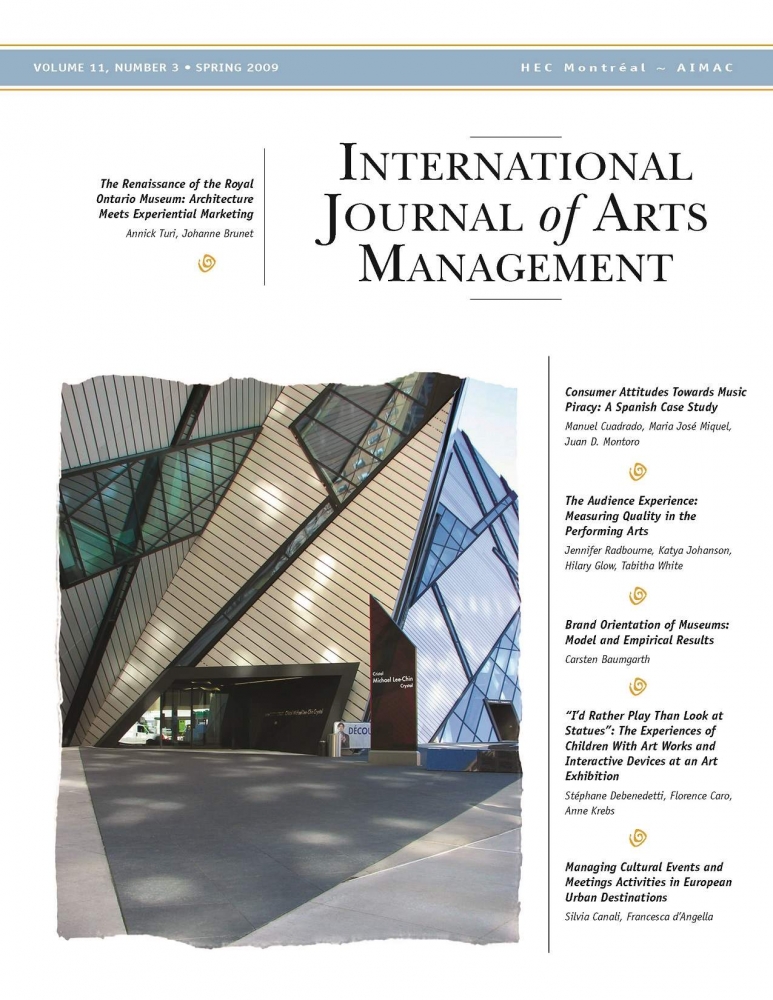IJAM Volume 11 Number 3 (PDF)
Product: Journal
$53.00 CA
EDITOR’S NOTE
This issue covers a number of themes that are a source of concern for the cultural milieu because of their impact on sales. The first is the pirating of popular music. Cuadrado, Miquel and Montoro study the music-consumption habits and attitudes of the three segments that make up the market for pirated music products, and they come to the conclusion that anti-piracy measures are very expensive and do not deliver significant results. This conclusion is consistent with that of other researchers who have studied this trend.
The notion of the quality or presentation of an artistic work involves an intangible aspect that is difficult to appraise. In their study, Radbourne, Johanson, Glow and White set out to measure audience loyalty based on notions of quality, risk and experience. A spectator’s evaluation of the quality of a work, and thus his or her loyalty to the company presenting the work, appears to vary according to the degree of experience – whether he or she is a novice or holds a season subscription.
In the world of consumer products, the management of different brands is considered a crucial element of corporate strategy. Baumgarth adopts an empirical approach, testing a brand management model for museums based on four elements: values, standards, artifacts and behaviour. This exercise demonstrates that brand management is just as important in the museum sector as in the field of commercial branding.
If we consider all the different segments that are represented by the art museum visitor, children account for a large portion of the museum-going public. In their research, Debenedetti, Caro and Krebs encourage museums to consider developing family-oriented tools aimed at drawing children’s attention towards the art works rather than the surrounding environment.
Business and consumer tourism are a significant source of income for many cities and regions. Canali and d’Angella present a case study of four cities – Barcelona, Berlin, Rome and Vienna – to show that culture is an interesting vehicle and a strategic driver for attracting not only tourists but also international conferences and business meetings.
Finally, our Company Profile looks at the Royal Ontario Museum in Toronto, Canada. It describes a real situation where architecture plays an essential role in the visitor’s consumption experience.
Happy reading!
François Colbert
Editor
